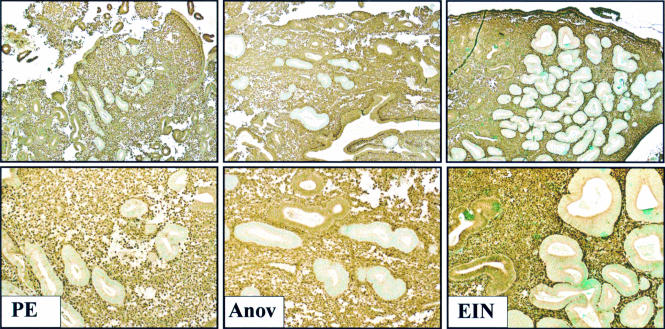Figure 1.
Broad spectrum of premalignant endometrial disease demarcated by PTEN immunohistochemistry. PTEN immunohistochemistry with monoclonal antibody 6H2.137,41,42 delimits the distribution of PTEN null pale glands (pale counterstain) in proliferative (left, “PE”), anovulatory (middle, “Anov”), and endometrial intraepithelial neoplasia (right, “EIN”) endometria. Loss of PTEN protein expression is abnormal, caused by mutations and/or deletion of the PTEN gene itself.41 A comparison of PTEN null and expressing glands shows no distinguishing features in proliferative and anovulatory endometria: these mutant clones unrecognised by haematoxylin and eosin staining represent preclinical disease. In contrast, PTEN null glands in EIN lesions have an altered cytology and are more tightly packed (low VPS; volume percentage stroma), which permits the identification of these localising lesions by routine histology. Although PTEN immunohistochemistry is informative for educational purposes, its low sensitivity (about half of EIN lesions express the PTEN protein) and specificity (most PTEN null glands are seen in histologically normal endometrium) in the detection of clinically relevant EIN lesions makes it impractical for routine patient care. Images reprinted, with permission, fromwww.endometrium.org.

